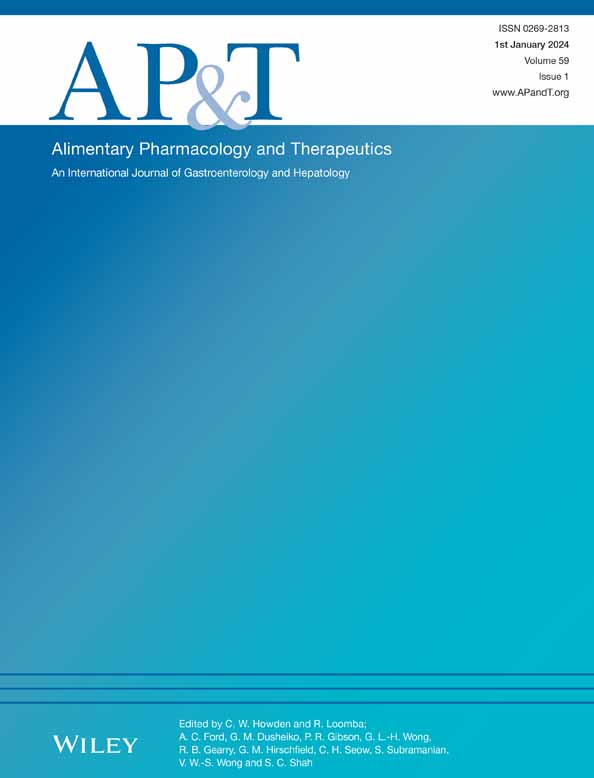Editorial: Unmasking the silent threat—acute kidney injury in alcohol-associated hepatitis. Authors' reply
LINKED CONTENT
This article is linked to Tyson et al papers. To view these articles, visit https://doi.org/10.1111/apt.17733 and https://doi.org/10.1111/apt.17771
We have presented our work on acute kidney injury (AKI) in alcohol-associated hepatitis (AH).1 In their editorial, Ma and Patidar argue that we urgently need to understand more about the causes and consequences of AKI in AH.2 Given that AKI is common in AH and that we showed that incident AKI is independently associated with 90-day mortality, it is imperative that future prospective studies in AH collect more comprehensive data on kidney function. Indeed, the importance of accurately recording and characterising AKI and its complications in the AH population can be seen in preliminary reports of the AlcHepNet trial of anakinra plus zinc versus prednisone in AH (NCT04072822). Here, patients treated with anakinra and zinc had a greater incidence of AKI and a higher 90-day mortality than those treated with prednisone.3
- A historical baseline creatinine at recruitment, where available
- Serum creatinine levels every 48–72 h for at least the first week after enrolment
- Whether a clinical diagnosis of hepatorenal syndrome was made, using established diagnostic criteria.4 Although further differentiation of AKI phenotype is desirable, this is notoriously difficult and may not be practical as a core part of all AH clinical trials
- Collecting urine and serum for biomarker analyses (ideally with samples at multiple time points)
Recording AKI to this level represents a challenge, but recent trial experiences suggest that this challenge should be met. These recommendations should be achievable at scale.
AKI in AH is important and requires further study, particularly given the lack of treatment options and the number of failed RCTs in the field. We hope future clinical trials give due consideration to this important confounder and potential therapeutic target.
AUTHOR CONTRIBUTIONS
Luke D. Tyson: Conceptualization (lead); writing – original draft (lead); writing – review and editing (lead). Stephen Atkinson: Writing – review and editing (supporting). Robert W. Hunter: Conceptualization (supporting); writing – original draft (supporting); writing – review and editing (supporting). Mark Thursz: Resources (lead); writing – review and editing (supporting). Nikhil Vergis: Conceptualization (supporting); writing – original draft (supporting); writing – review and editing (supporting).
ACKNOWLEDGEMENTS
Declaration of personal interests: We are grateful for the support of the STOPAH trial management group and the Minimising Mortality from Alcohol-related Hepatitis consortium. This study was supported by the UK Medical Research Council (grant MR/R014019/1) and the National Institute for Health Research Imperial Biomedical Research Centre. STOPAH was supported by NIHR Health Technology Assessment Programme grant 08 14 44.
CONFLICT OF INTEREST STATEMENT
The authors' declarations of personal and financial interests are unchanged from those in the original article.1
FUNDING INFORMATION
This study was supported by the UK Medical Research Council (grant MR/R014019/1) and the National Institute for Health Research Imperial Biomedical Research Centre. STOPAH was supported by NIHR Health Technology Assessment Programme grant 08 14 44.
LINKED CONTENT
This article is linked to Tyson et al papers. To view these articles, visit https://doi.org/10.1111/apt.17733 and https://doi.org/10.1111/apt.17771




